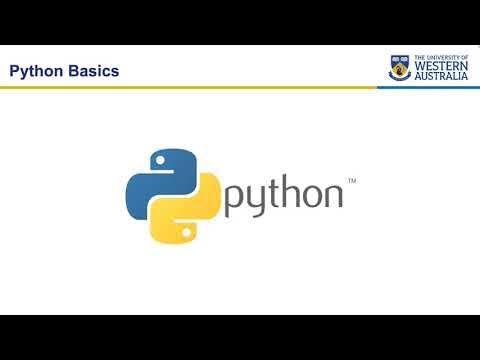Penerapan Konsep Variabel Tipe Data dan Operator Pada Pemrograman Visual
Summary
TLDRThis video introduces Visual Basic programming concepts, focusing on variables, data types, and operators. It explains how to declare variables, their naming rules, and the various types of data (numeric, string, boolean). The tutorial also covers different operators used in Visual Basic, including arithmetic, logical, and comparison operators. The video includes practical coding exercises, guiding viewers through creating a simple calculator program that performs addition, subtraction, multiplication, and division. Viewers are encouraged to follow along and apply what they've learned to their own Visual Basic projects.
Takeaways
- 😀 Visual programming is a useful skill to learn, especially using Visual Basic 2010.
- 😀 Variables are used as temporary containers for data, and they must adhere to certain rules such as starting with a letter and not containing spaces.
- 😀 Variable names should be short and meaningful, and they cannot conflict with reserved keywords in Visual Basic.
- 😀 Data types in Visual Basic include numeric types (like Integer, Long, Single, Double), string types, and boolean types.
- 😀 For numeric data types, different sizes are available, with Long being suitable for larger numbers and Single/Double for floating point values.
- 😀 String variables store text and can contain up to 65,500 characters. They must be enclosed in double quotation marks.
- 😀 Boolean variables can hold two values: True or False, which are often used in logical comparisons.
- 😀 The assignment operator '=' in Visual Basic is used to assign values to variables.
- 😀 Arithmetic operators in Visual Basic include addition, subtraction, multiplication, division, and modulus, and these are used to perform mathematical operations.
- 😀 Comparison operators in Visual Basic allow for logical operations such as equality, inequality, and comparison of values (greater than, less than).
- 😀 The video demonstrates practical examples of a simple calculator program using Visual Basic, where operators like addition, subtraction, multiplication, and division are applied to user inputs.
Q & A
What is the purpose of variables in programming, as discussed in the script?
-Variables are used to store values temporarily in programming. They serve as placeholders for data, which can be modified during the execution of a program. The data type of the variable determines the kind of data it can hold.
What are the key rules for naming variables in Visual Basic, according to the video?
-When naming variables in Visual Basic, they must start with a letter, cannot exceed 225 characters, must not use reserved keywords, and cannot contain spaces or special characters like periods or exclamation marks.
How do you declare a variable in Visual Basic?
-To declare a variable in Visual Basic, you use the syntax 'Dim variableName As dataType'. The declaration may include an access modifier like 'Public' or 'Private' to define the variable's scope.
What are the types of numeric data available in Visual Basic?
-Visual Basic provides several numeric data types, including Byte, Integer, Long, Single, Double, and Currency. Each type has a specific size and range of values it can store.
What is the difference between Integer and Long data types?
-The Integer data type can store values between -32,768 and 32,767, whereas the Long data type can store much larger values, from -2,147,483,648 to 2,147,483,647.
How does the String data type function in Visual Basic?
-The String data type in Visual Basic is used to store text or characters. It is enclosed in double quotes and can hold up to 65,535 characters.
What is the Boolean data type used for in Visual Basic?
-The Boolean data type is used to store logical values that are either 'True' or 'False'. It is often used for conditional statements and logic operations.
What are operators in Visual Basic, and what are their types?
-Operators in Visual Basic are symbols that perform operations on variables or values. They include assignment operators, arithmetic operators (such as +, -, *, /), comparison operators (such as =, <>, <, >), and logical operators (such as And, Or, Not).
What is the significance of the '=' operator in Visual Basic?
-In Visual Basic, the '=' operator is used for assignment, meaning it assigns a value to a variable. It is also used in conditional statements for equality comparison.
How can you implement a simple calculator using Visual Basic, as described in the script?
-To implement a simple calculator in Visual Basic, you create a form with TextBoxes for user input, Buttons for operations (such as addition, subtraction, multiplication, and division), and a Label for displaying results. Then, you write code to handle the logic of the operations based on user input.
Outlines

This section is available to paid users only. Please upgrade to access this part.
Upgrade NowMindmap

This section is available to paid users only. Please upgrade to access this part.
Upgrade NowKeywords

This section is available to paid users only. Please upgrade to access this part.
Upgrade NowHighlights

This section is available to paid users only. Please upgrade to access this part.
Upgrade NowTranscripts

This section is available to paid users only. Please upgrade to access this part.
Upgrade NowBrowse More Related Video

#2 Tipe Data, Variabel, dan Operator

Praktek 2

Data Types Variables And Operators In Python | Python Fundamentals | Great Learning

UWA CSSE Core Python Programming - Python Basics

Variabel #5 | C++ | Bahasa Indonesia

Informatika Analisis Data Pengenalan Bahasa Phyton Pada Google Collab Perintah print dan array
5.0 / 5 (0 votes)